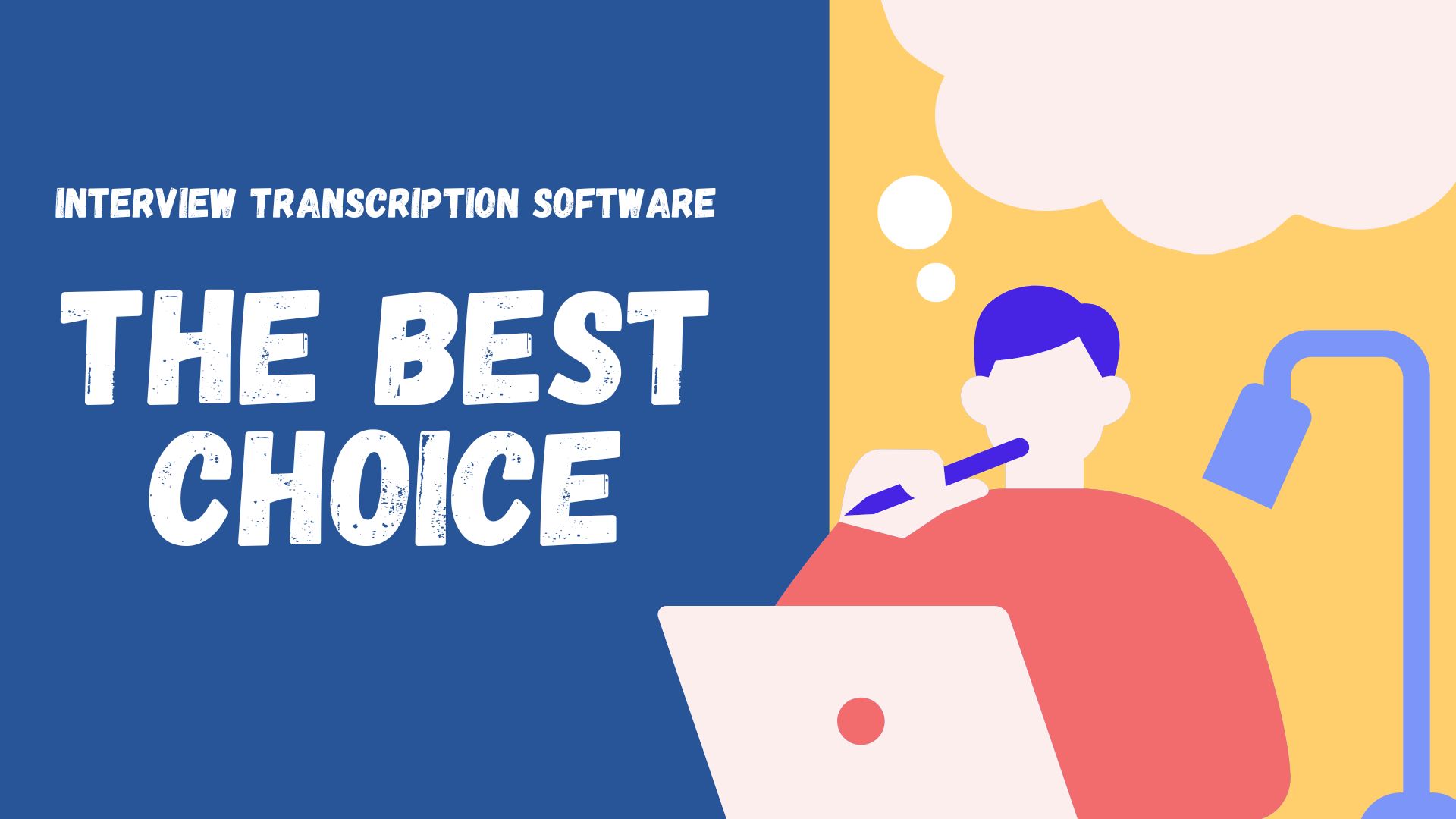In today’s fast-paced digital age, transcription software has evolved to become an indispensable tool for journalists and researchers. The evolution of transcription software has revolutionized the way interviews are documented and analyzed. Gone are the days of manual transcribing, as modern technology now offers efficient and accurate solutions for converting audio recordings into written text.
Transcription software has come a long way from its early iterations. It has transitioned from basic voice-to-text conversion to incorporating advanced artificial intelligence (AI) algorithms. Different professionals may have varying needs when it comes to transcribing interviews. For journalists, the ability to seamlessly transcribe on-the-go interviews may be a priority, while researchers might prioritize features that enhance accuracy and facilitate data analysis. By identifying these needs, you can make an informed decision when selecting the most suitable transcription software for your professional endeavors.
4 Best Interview Transcription Software for Journalists & Researchers
When it comes to interview transcription software, journalists and researchers have a plethora of options to choose from. Each software offers unique features tailored to specific needs, enhancing the efficiency and accuracy of the transcription process.
VOMO
VOMO stands out as a versatile transcription tool that caters to the dynamic needs of journalists and researchers. With VOMO, you can record anywhere and seamlessly import voice memos, ensuring that no valuable insights are lost during interviews. Its powerful transcription capabilities, supported by Nova-2 and Whisper technologies, guarantee high accuracy even in challenging audio environments. Additionally, VOMO boasts an AI assistant powered by GPT-4-Turbo, providing intelligent support throughout the transcription process.
Microsoft Word
While primarily known for its word processing capabilities, Microsoft Word also offers built-in transcription features that are invaluable to journalists and researchers. The seamless integration with the Office Suite further enhances its utility, allowing for a cohesive workflow within familiar applications.
Google Docs
Google Docs is renowned for its accessibility and collaboration features, making it an ideal choice for professionals in various fields. For journalists and researchers, its voice typing functionality provides a convenient method for transcribing interviews while facilitating real-time collaboration with peers or team members.
Notta
One of Notta’s standout features is its ability to perform live video transcription, offering real-time conversion of spoken content into written transcripts. This functionality is invaluable for journalists and researchers who conduct interviews through video platforms, enhancing the efficiency of documenting crucial information. Additionally, Notta prioritizes data security through robust encryption measures, safeguarding sensitive interview transcripts from unauthorized access.
Maximizing Your Transcription Software’s Potential
Now that you have selected the most suitable interview transcription software for your professional needs, it’s essential to maximize its potential by implementing best practices and leveraging advanced features.
Tips for Better Transcriptions
Enhancing Audio Quality: To ensure high-quality transcriptions, optimizing the audio input is crucial. Start by using a reliable microphone or recording device that captures clear and crisp audio. Minimizing background noise and utilizing pop filters can further enhance the audio quality, resulting in more accurate transcriptions. Additionally, consider conducting interviews in quiet environments to improve the overall clarity of the recorded content.
Customizing Settings for Accuracy: Each transcription software offers customizable settings that can significantly impact accuracy. Take advantage of these settings to tailor the transcription process to your specific requirements. Adjusting parameters such as language models, speaker diarization, and punctuation preferences can enhance the precision of transcribed content, ensuring that it aligns with your professional standards.
Leveraging AI for More Than Transcription
In addition to converting spoken words into written text, modern transcription software equipped with advanced AI capabilities offers multifaceted benefits for professionals in various fields.
AI-powered transcription software can analyze interview transcripts to generate concise summaries and extract actionable insights from lengthy discussions. This functionality streamlines the process of identifying key points within interviews, enabling journalists and researchers to efficiently extract valuable information without sifting through extensive transcripts manually.
Key Considerations for Selecting the Best Transcription Software
As you navigate the landscape of interview transcription software, it’s essential to consider key factors that will guide you in selecting the best solution for your professional needs.
Evaluating Your Specific Needs and Requirements
Before making a decision, take the time to thoroughly evaluate your specific needs and requirements. Consider the nature of your interviews, whether they are conducted in diverse environments or predominantly in controlled settings. Assess the volume of interviews you conduct regularly and the level of accuracy required for your transcriptions. By understanding these unique aspects, you can pinpoint the features and capabilities that are crucial for enhancing your transcription process.
Ensuring Compatibility with Existing Workflows and Tools
Another vital consideration is ensuring that the chosen transcription software seamlessly integrates with your existing workflows and tools. Compatibility with other applications and systems used in your professional endeavors can significantly streamline your transcription process. Whether it’s integration with project management platforms or collaboration tools, compatibility enhances efficiency and facilitates a cohesive workflow within familiar environments.
Conclusion
By meticulously evaluating your specific needs and ensuring compatibility with existing workflows and tools, you can confidently select an interview transcription software that aligns with your professional requirements, ultimately enhancing productivity and precision in documenting interviews.
With the considerations at the forefront of your decision-making process, you are poised to harness the full potential of interview transcription software, empowering you to efficiently transcribe interviews while meeting the demands of journalistic integrity and rigorous research standards.
To experience firsthand how VOMO can elevate your interview transcription process, download VOMO now.


